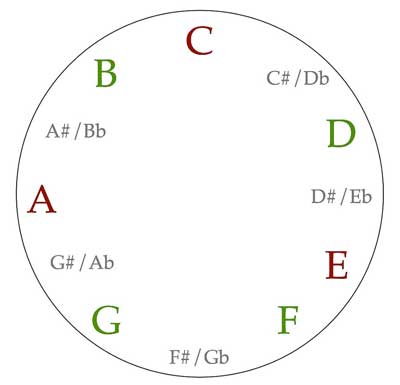Dissecting Your Scales To Build Your Technique

Learn your scales. Learn your scales. Learn your scales… We hear it over and over while we’re learning to play music, but often we don’t hear enough about what we can do with those scales once we’ve learned them.
When we really learn scales, they can unlock many musical doors for us, and to build speed and good technique, there’s an endless amount that we can do with scales that goes beyond just playing them up and down, which is often all we’re taught to do.
Hopefully you’re all familiar with the concept of musical patterns by now. Often, these patterns simply involve taking a short group of notes or intervals, and moving that group by sequencing it, which means shifting the same sequence of intervals by starting the sequence from a different degree in the scale.
Start Simple
If you’ll notice, there is no sheet music being offered in this article. This is because I want to get you actually thinking and internalizing, instead of reading passively. Giving you nothing more than the numbers of the scale degrees forces you to very clearly “see” what you’re playing.
Let’s start with a simple example in C Major. If we are to play a series of ascending notes such as scale degrees 1-2-3, or C-D-E, we can then move that to all the different degrees of the scale:
- D-E-F
- E-F-G
- F-G-A
- G-A-B
- A-B-C
- B-C-D
Now given how friendly C Major is, this might not seem very difficult. However, if you pick one of the thornier keys on the instrument and try to do each little note cell repeatedly as fast as you can you will definitely run into some snags that you can work on.
The Next Step
Now let’s sequence something a little more advanced. Again, in C Major, let’s take C-G-F-G-E-G, which expressed numerically in scale degrees is 1-5-4-5-3-5. When we move this little cell or pattern around to the other degrees of the scale, we’ll end up with:
- 1-5-4-5-3-5
- 2-6-5-6-4-6
- 3-7-6-7-5-7
- 4-8-7-8-6-8
- etc…
Again, this might be easy for you in C Major, but try it in Ab Major and it might present some challenges.
Or how about a simple six note scale arpeggio, such as 1-3-5-7-5-3, or C-E-G-B-G-E in C Major. If we move this one around, we end up with:
- 2-4-6-8-6-4
- 3-5-7-9-7-5
- 4-6-8-10-8-6
- etc…
And this is actually is an arpeggiation of every seventh chord in the scale.
And as with all your practice, you’re only limited by your imagination in coming up with your own ideas. Here are another few to get you started:
1-3-2-3
1-4-3-4
3-1-2-1
3-4-5-3-2-1
1-2-5-4-3-2
1-3-6-5-4-3-5-3
Two Approaches
There are two ways you can approach practicing these. You can either play each little musical cell over and over starting from the same note (increasing your speed as you get comfortable), or you can play them just one time from each note before sequencing it to the next note up or down.
Take your time with these, and make sure you’re not leaving out any of the keys when you do this. As always, we get the most out of practicing the minimum amount of material with the deepest focus possible, and remember, technique is not just about speed, it’s about precision, making good connections between notes in a relaxed fashion that will further all aspects of your music making.
Enjoy!
Learn with and Listen to Sam
Sam Sadigursky is currently offering online lessons through Skype and private lessons in NYC. He has given improvisation clinics across the U.S., is a regular guest professor at Hunter College, and currently performs internationally with Darcy James Argue’s Secret Society, Folklore Urbano, and others. His new book, 12 INTERVALLIC ETUDES for Saxophone, is available here. His albums can be purchased at http://samsadigursky.bandcamp.com. To find out more, visit SamSadigursky.com.





